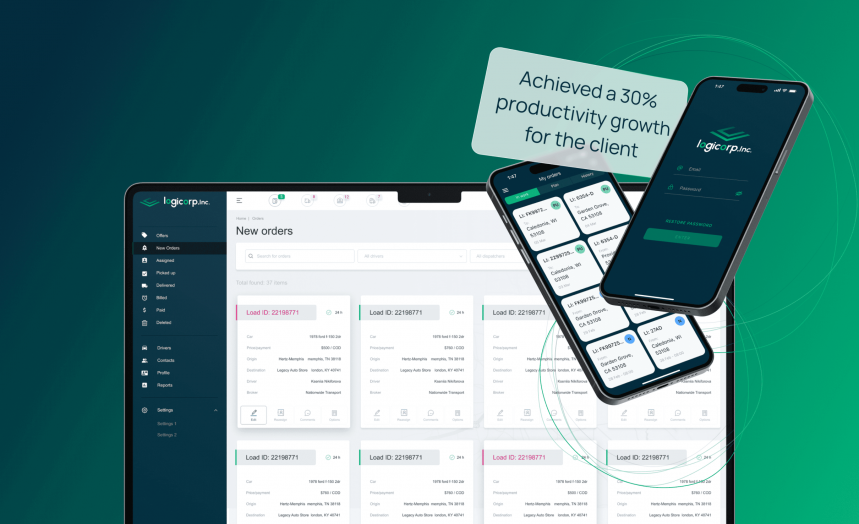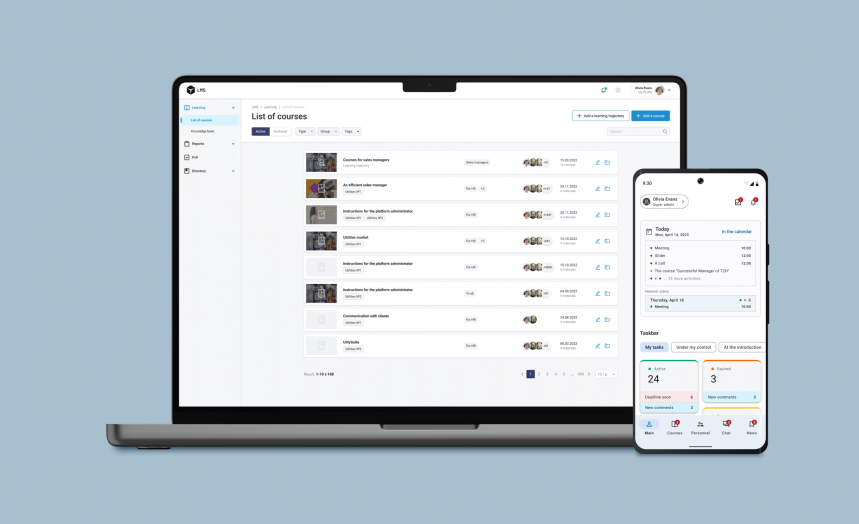
Cross-Platform App Development Services
Software Solutions for Multiple Platforms
WEZOM can create highly professional and secure hybrid mobile applications, combining affordability with unparalleled execution.

Custom Cross-Platform Applications Development
WEZOM takes a personalized approach to each hybrid application, building software solutions customized to your ideas and preferences.
Migration for Hybrid Apps
Is your business in need of migrating an existing software solution? We can help. We will transfer it to a unified codebase without affecting data integrity.
Сross-Platform Quality Assurance
Our QA specialists perform various types of testing to ensure the application is near perfect. Thus, we’ll ensure the best optimization and accordance with the industrial standards.
Integration Services for Hybrid Software Solutions
WEZOM’s experts can integrate your custom mobile solution with third-party solutions to expand its features and secure data exchange with preserved integrity.
Post-Launch Support
We continue to support the deployed applications. Therefore, you will receive regular post-launch updates the app's stability, security, and optimal work.
Do You Face A Business Challenge? We Have A Cross-Platform Solution

Due to a single codebase, cross-platform apps for iOS and Android are a perfect solution for tight budgets. Building such an application can save you money on specialists and tools rather than risk investments in multiple platforms. Moreover, expert developers can build hybrid applications faster, which reduces their overall price.
If an application is launched and at least one of its versions lacks a certain aspect, it could be a reputational disaster. At the same time, additional time for polishing can cost more resources than it will bring benefits. Hybrid applications imply simultaneous deployment of key updates. This feature enables revenue to come in as fast as possible without compromising the product’s quality.
When you release an app for a single operating system, you limit the pool of your future customers. Hybrid applications remove this obstacle. They can be compatible with several OSes of your choice, reaching a wider audience. We consider all of the industrial standards for each operating system during the solution development to provide you with the highest quality product.
Many people use different devices for their daily needs and tasks. Applications developed strictly for a single device, like a smartphone, struggle to maintain consistency in the experience of the app’s usage. WEZOM experts will build a comfortable and steady application for all of the users to enjoy all the features without hindrances. Whatever application option your users choose, they will get the best experience with the hybrid software solution.
Maintenance of natively developed apps can become complex over time. Different versions of the application for different systems require dedicated time and resources. The longer the application exists, the more costly support becomes. A hybrid solution is more easily supported and maintained. A single data and code base allows quick update implementation across different platforms, reducing the time and costs of development.
Different codebases for various platforms in natively developed applications can lead to feature discrepancies between the versions. This drawback can spoil the overall user experience and lower the application’s rate. One of the major advantages of hybrid applications is a unified codebase that shares similar functionality across several platforms. As a result, users get a better experience and will share it rather than complain about its drawbacks.
Software Company WEZOM
Our objective is to develop a profitable and effective solution that helps clients to expand their businesses and overcome financial constraints. We are committed to exceptional service and utilizing all resources to bring the finest products & services.
We've Been Awarded Plenty for the Milestones We Have Achieved
Service Options
If you have an idea that will appeal to a mass audience and want to market it as soon as possible, our cross-platform app development services will aid you. We will implement a full development cycle to deliver an app that meets your business's and your audience's needs.


What clients say

I am very satisfied wit the work process and project management. Everything was clear, on time and I had nothing specific to add. Yes, we are satisfied with the result of the work and the product meets the goals set. I can't wait to continue our work on the app.

Incode-Group is thrilled to recommend WEZOM for their exceptional services. Their development of an employee management system for our company has been transformative, revolutionising our operations and optimising efficiency across the board. WEZOM's consistent delivery of outstanding work has made them an integral part of our team. Their expertise in software development and UX design has played a pivotal role in enhancing our project's functionality and user experience. We are truly grateful for WEZOM's contributions and highly endorse their services.

Our collaboration with WEZOM to develop the interactive learning platform for Corpsoft.io was exceptionally positive. From the outset, WEZOM demonstrated a deep understanding of our requirements and goals for the project. Their team was proactive in proposing innovative solutions and ensuring that the platform met our needs for engaging and effective online education. Throughout the development process, communication with WEZOM was clear and transparent. They provided regular updates on progress, promptly addressed any issues or concerns, and sought feedback to ensure alignment with our vision. The project was completed within the agreed timeline and budget, showcasing WEZOM's commitment to delivering results.
Types of Solutions We Offer




How We Create Hybrid Mobile Software Solutions
We use proven Agile software development methods to implement the most ambitious ideas in life swiftly. From idea to realization, your application is in professional hands.
How we workResearch and discussion
Design
Development
Testing and Deployment
Maintenance & Support
Hybrid Applications Development FAQ
How Much Does It Cost to Create a Multi-Platform App?
Developing a hybrid mobile software solution costs between $20,000 and $70,000. The precise cost of the development depends on the scale of the project and its deadline.
How Long Does Hybrid App Development Take?
The fastest option for a cross-platform software solution release is three months. If we talk about more average figures, a professional cross-platform development company can create a multifunctional hybrid application in six months.
How Do You Keep My Hybrid App Data Secure?
Modern protocols such as OAuth and OpenID Connect are proven solutions for application security. We can also implement multi-factor authentication (MFA). In addition, we adhere to generally accepted standards for ensuring the security of the software we create through the implementation of modern encryption protocols, the elimination of vulnerabilities in the program code, etc.





